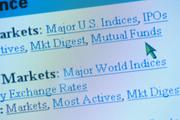MW&A realizes the importance of responding to the different investment needs and risk tolerance levels of all our clients. For this reason, our advisory firm offers three different management strategies from which clients may choose for the investment of the funds in their accounts. From the most conservative to the most aggressive, these are the Moderately Conservative Strategy, the Moderately Aggressive Strategy and the Aggressive Strategy.
The Moderately Conservative Strategy serves as a sensible alternative for client funds which may currently be invested in very low interest rate bearing securities such as savings and checking accounts, certificates of deposit, money market funds and U.S. Treasury securities. While this strategy would not offer the degree of safety of these securities, it would certainly offer the potential for a greater return on their investment. In using this strategy, our primary objective is to avoid a net loss in the asset value of an account in any one calendar year. In an effort to accomplish this objective, MW&A manages these accounts very conservatively early in each calendar year. As the year progresses, if gains are achieved, a gradually more assertive approach is applied. This allows the potential for further gains. On the other hand, if profits are not produced or a loss develops during the year, the very conservative approach continues to be applied. At the beginning of each year, this same plan is once again be reapplied.
With the Moderately Aggressive Strategy, MW&A is more assertive in managing account funds. This may involve an increase in the holding period for the ETFs bought into, staying more fully invested in equity funds (as opposed to fixed income funds), and/or taking larger positions in funds chosen for investment. At first impression, this strategy may seem aggressive or risky; however, that is actually not the case. While most funds we use may be considered quite aggressive when standing alone and objectively judged, we believe this fact is significantly offset by the manner in which we use those funds. Before buying into a fund, we analyze it considering numerous factors such as the fund’s past performance, the size and age of the funds, its typical volatility, the identity of the fund manager and his/her tenure, the particular fund family involved, early redemption penalties, schedule of dividend payouts, etc. It is very important to note that ETFs, by their very make-up, mitigate risk by offering diversification that is not afforded by most other investment securities.
In choosing the Aggressive Strategy, the client allows us to invest their account in individual common stocks and ETFs. This is the only strategy that involves investment in individual common stocks.
Usually between 7 and 12 ETFs and stocks are held in each account at any one time.
Each ETF and stock involved in this process is carefully selected by applying certain criteria. Equities from well-established companies make up the portfolio. They occupy positions in a variety of market sectors including financials, industrials, health, utilities, technology, energy, etc. Both small and large cap companies are held. Companies with solid balance sheets and demonstrating an ability to hold up relatively well during economic slowdowns and/or weak market conditions are sought out.
We consider political factors, the four-year election cycle, all aspects of the interest rate environment, the value of the dollar, along with other fundamental and technical factors. On the technical side, we look to see historic support and resistance levels for both the prominent stock indices and the stocks we view for potential purchase and sale. Further, we attempt to pick the ideal time (to the minute in some cases) to buy into and sell out of stocks and ETFs. Common stock and ETF transactions can be made intraday which offers great flexibility.
We do not operate based on stock recommendations. They have already received a run-up based on the recommendation before we are able to act. Further, being a little skeptical, the entity offering the recommendation may use the run-up as an opportunity to sell out of or reduce their position in the stock.
When the Aggressive Strategy is applied to taxable accounts (as opposed to IRAs or other tax-deferred accounts), there are tax strategies that we are alert to and will utilize. For example, if a stock has lost value subsequent to purchase, it would likely be liquidated before a holding period of one-year lapses in order to establish a short-term capital loss. On the other hand, stocks showing price appreciation may likely be held at least one year or more in order to turn any profit into a long-term capital gain. These are examples of obvious tax avoidance strategies we employ.
ETF holdings are now applicable to all three of our management strategies. ETFs are very much like mutual funds. That is, they hold a basket of stocks, but they can be traded at any time while the host security market is open for trading. Thus, they can be traded like stocks which make them considerably more flexible than mutual funds. ETFs are offered on virtually every conceivable asset class, from traditional investments to so-called alternative assets like commodities or currencies. ETFs were first introduced in 1993, and their popularity and use have consistently expanded over the years. We do not believe our use of ETFs represents either a more or less aggressive investment approach for our clients’ accounts. We do, however, believe it will constitute an improved approach.
In summary, stocks and ETFs are currently held in Aggressive Strategy accounts; and solely ETFs are held in Moderately Aggressive and Conservative Strategy accounts.
MANAGEMENT STRATEGIES
Mike Wolters and Associates
Registered Investment Advisor
Mike Wolters and Associates
Registered Investment Advisor








